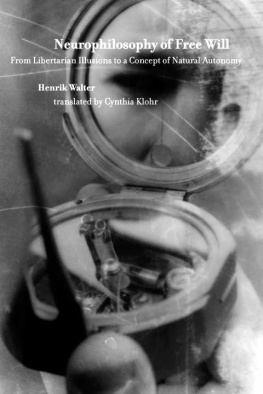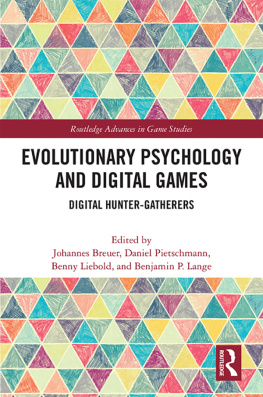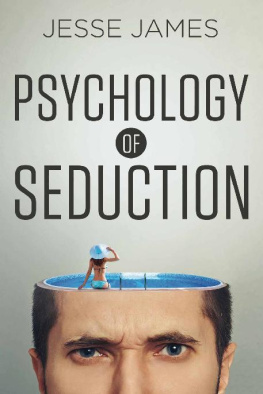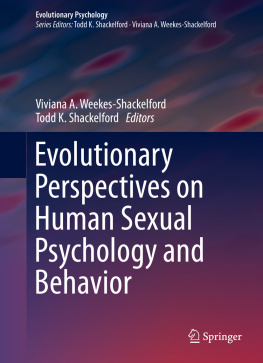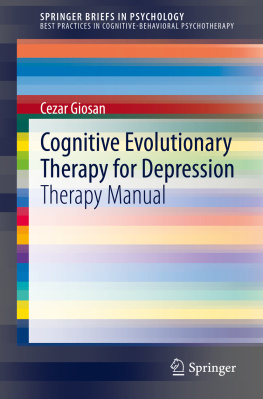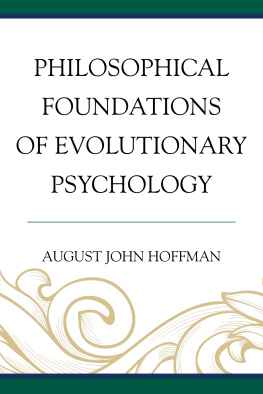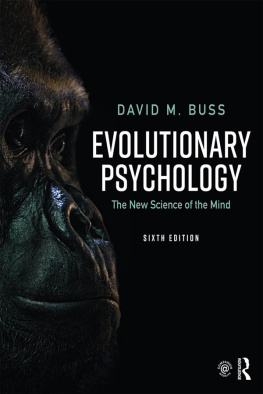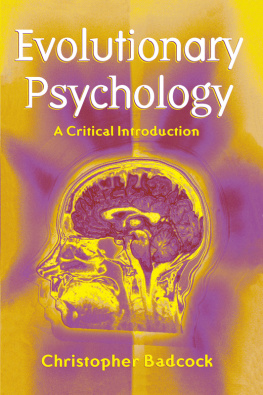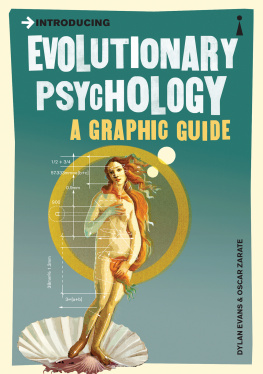Alex Walter SpringerBriefs in Philosophy Evolutionary Psychology and the Propositional-attitudes 2012 Two Mechanist Manifestos 10.1007/978-94-007-2969-8_1 The Authors(s) 2012
1. Evolutionary Psychology and the Propositional-Attitudes: Why the Cognitive Turn is a Wrong Turn
Abstract
What is a propositional-attitude and why does it appear to be important to psychology? A diverse array of philosophers and psychologistsalthough they agree on little elseassure us that explanation in psychology can not exist without a strong commitment to such attitudes. In a nutshell, propositional-attitude refers to a model of mental life that is presented as though the structure of thought is that of sentences. Jerry Fodor, foremost among the various advocates of this commitment, has stated the case for the centrality of propositional-attitudes, first in his seminal Language of Thought (Fodor 1975), and then again in his reprisal, LOT 2 (Fodor 2008).
What is a propositional-attitude and why does it appear to be important to psychology? A diverse array of philosophers and psychologistsalthough they agree on little elseassure us that explanation in psychology can not exist without a strong commitment to such attitudes . In a nutshell, propositional-attitude refers to a model of mental life that is presented as though the structure of thought is that of sentences. Jerry Fodor, foremost among the various advocates of this commitment, has stated the case for the centrality of propositional-attitudes, first in his seminal Language of Thought (Fodor 1975), and then again in his reprisal, LOT 2 (Fodor 2008). The basic form of the model was sketched in Language of Thought (Fodor 1975) as follows: An agent finds himself in situation S. The agent believes that a certain range of behavioral options (b1 b2 bn) are available in situation S. The probable outcomes that follow from performing each b in S are calculated (including relevant cetus paribus clauses). A preference ranking is matched against the agents preference standards. The agent makes a decision that optimizes the desired outcome given the preference standards and the probabilities assigned to the different outcomes (Fodor 1975, pp. 2829). Although Fodor attempts to convince the reader that there must be a language of thought, I would like you to consider the possibility that there is no such thing as a language of thought because the premises of the argument are deeply mistaken.
Varieties of Propositional Experience
Propositional-attitudes come in two basic forms. The first is Folk Psychology which is generally construed on the model of conscious intentions (Searle 1980a, b, 1984), reasons (Davidson 1963, 1980; Toulmin 1970), or rational practical reasoning (Driscoll and Stich 2008). The second set consists of Information Processing Models (Chomsky 1965, 1972, 1980; Fodor 1975, 2008) Does either model provide a suitable candidate for an explanatory model in evolutionary psychology? Does either provide an account of the proximate mechanisms that produce behavior? My Argument is that both do not. Both fail, however, for different reasons. Folk Psychological (FP) models fail because motivational endowments include mechanisms that are subdoxastic (Stich 1978), and because such mechanisms must be related to their evolutionary and proximate stimulus conditions. Information processing models (IPM) fail because they are dualistic since they posit a level of mental events that violate philosophical materialism (Feyerabend 1963a, b). That is, IP models are either explicitly or implicitly committed to mindbody dualism as argued by Uttal (2004, 2005). Finally, IP models also fail because representations in the brain are not sentential or propositional in nature (Churcland 1986; 2007). Despite their differences, however, both forms of propositional-attitude have at their base a commitment to intentionality.
The Intentional Bogeyman
What is intentionality and where does it fit into the explanation of behavior? Dennett (1983, 1996) advanced the thesis that there were three stances one could strike in the explanation of behavior: the physical, the design, and the intentional. The physical stance is materialistit provides explanations in terms of physics, chemistry, and other biological structured wholes that supervene on physics and chemistry, such as genes or neurons. The physical stance specifies what the sociobiologist or evolutionary psychologist calls the proximate mechanism. The design stance, on the other hand, specifies the adaptive history that explains the function that the physical thing is designed to perform. The design stance specifies the adaptation . The design stance would thus specify a creator/designer or a process such as natural selection. Hence, on the physical stance we would specify, for example, the material mechanisms and structure of an electric can opener, while on the design stance we would specify that its purpose was to open cans. If we are dealing with a biological system, the designer is natural selection and the proximate mechanisms might include a neural system that produces a given behavior or the genes that catalyzed the development of that particular structure. Although Dennett asserts that the physical stance trumps the design stance, it should be clear to sociobiologists or evolutionary psychologists that the design stance is not inferior to the physical stance. Both have different and complementary roles to play in the explanation of behavior. Since evolutionary psychologists (and sociobiologists) believe that proximate and ultimate categories of explanation are mutually exclusive and exhaustive, have they overlooked an entire domain of explanation called the intentional?
I have not yet stated what an intention is. Dennett informs us that the philosophical meaning of the term is to be distinguished from the commonsense meaning, which refers simply to the deliberate nature of an action. For instance, you intended to open the door and not the window. (We will discuss the nature and place of commonsense intentionality below when I address John Searles notion of intrinsic intentionality.) The philosophical notion of intentionality has several parts, all of which are a bit slippery in that one slides into the other, forming what I call the slippery slope of intentionality. The foremost feature of the intentional, according to Dennett (and this is also asserted by Jerry Fodor), is its aboutness . An intention is a mental state that is about something. This is where the slippery slope begins and it is a steep one because we are all of a sudden introduced to the apparent necessity of the propositional-attitudes of belief and desire . For instance, if I desire a roast beef sandwich and I believe there is roast beef in my refrigerator, I may go into the kitchen with the intent of making a roast beef sandwich. In fact, belief + desire = intention. The belief about the existence of the roast beef and the desire for it constitute an intention to make and eat a roast beef sandwich. Each of these propositional-attitudes is manifest in the sentences in which they are expressed. What more could we want in an explanation than that?
The puzzling thing about this type of intentionality is that animals that do not exhibit language abilities also can be said to harbor intentional states, although Dennett refers to the attribution of intentionality to non-linguistic creature as as if. Even though hornets and butterflies do not have verbal capabilities, they can be said to behave as if they had beliefs and desires. This type of thinking is prevalent in sociobiological thinking even today. For example, Hales (2009) quotes Joyce (2006) as characterizing kin selection in just such an as if form of intentional state: provide-help-to-those-conspecifics-with-whom-you-intereact-frequently (Joyce quoted in Hales 2009, p. 437). While this sort of as if rule-following behavior may strike some as plausible in the case of sentential being such as humans, it becomes somewhat more contentious when applied to non-sentential creatures such as crocodiles and birds. Hales shows how absurd it would be to characterize a situation of reciprocal altruism between a crocodile and a ziczac bird: Ziczacs and I [croc] have been engaged in a cooperative enterprise for a while now, and I have every reason to believe that we will be business associates well into the future. Since our relationship has been so mutually advantageous so far, I choose not to eat a ziczac today (Hales 2009, p. 440). Dennett would assert that this rule is just a short-hand way of speaking about this relationship as if these creatures had intentionality even though we know some causal-mechanical account is required instead. Dennett readily admits that the design and physical stances trump the intentional stance, but is the intentional stance a coherent way to stand? As Patricia Churchland (1983) points out in her critique of Dennetts as if intentionality, the frog at the bottom of Dennetts cup is the commitment to propositional-attitudes which are necessarily based on some form of language of thought model.



